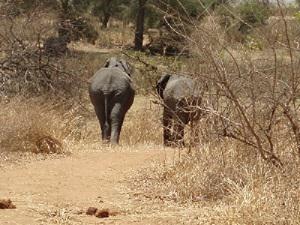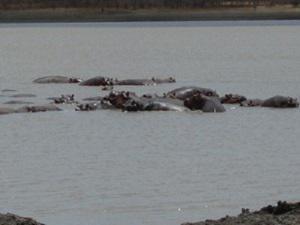Leonard Manda
The proximate aim is to strengthen collaborative management with the ultimate aim of reducing illegal activities and thus promoting conservation and sustainable use of resources in the two protected areas.

Elephants in Vwaza.
This is a twelve-months’ project aiming at strengthening Collaborative Management to promote conservation and sustainable use of natural resources in two adjacent protected areas, Nyika National Park (3,134km2), renowned for its endemism and Vwaza Marsh Wildlife Reserve (986km2), comprising one of Malawi’s important wetlands. Not until the introduction of Collaborative Management in 1995, protected area management in Malawi excluded local communities.

The concept of Collaborative Management involves an integration of conservation and sustainable use through active participation of local communities that directly shoulder the consequences of living in the borders of these protected areas. One way of achieving this is by assuming direct flow of benefits from protected areas to surrounding communities, and encouraging communities’ participation in management of such resources. However, despite its introduction, biodiversity in the two protected areas is increasingly getting lost largely through illegal activities (including poaching) which have contributed to decreased fauna populations. For instance, a record complete loss of two key species, the Eland and Zebra was recorded in 2005 in Vwaza Marsh Wildlife Reserve. This project intends to reduce illegal activities through assessment of communities’ attitudes, training communities in access and benefit sharing, and raising awareness on importance of resource conservation.
Recognising that Collaborative Management is a new concept and coming against a long historical background of state-controlled management style of natural resources, and also considering that people’s mindsets take long to change, it was felt that there was need to revitalise and harness knowledge on the new strategy both of the local communities and Parks officials as well. A combination of approaches will be used in this project. These include a consultative meeting, household survey, awareness campaigns and training in access and benefit sharing.
It is expected that upon completion of the project local communities will have a positive attitude towards conservation work. Furthermore, it is hoped that both Parks officials and communities will be able to make informed decisions regarding conservation and sustainable use of resources in the project area. It is envisaged that this will culminate into reduced cases of illegal activities and conflict in the two protected areas and therefore promote biodiversity conservation. It is further anticipated that key issues identified and recommendations from this work will contribute to improvements of similar strategies in other protected areas in Malawi and beyond.